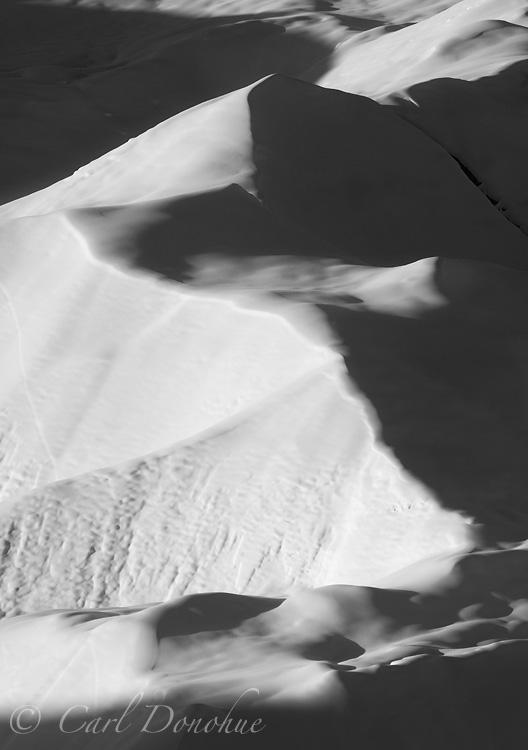The Kennecott Glacier, also spelled Kennicott Glacier. In winter, even the gnarliest of moraines can be a thing of beauty. And for anyone who’s ever hiked across it, the Kennicott Glacier moraine is DEFINITELY gnarly.
Covered in fresh snow, however, and wonderfully sidelit by the mid-winter morning light, the rhythm of the moraine changes. The rolling ridgelines and troughs become more inviting. The rising slopes don’t seem quite so burly. And the gentle play of light, as ever, evokes a softer mood.
Until, of course, you venture out on to the moraine. Then it becomes a trap, the softest of dry powder collapsing underneath your weight like it doesn’t even exist. Either in snowshoes or broad, backcountry skis, I sink, almost waist-deep, into the powder and every step forward becomes a mission. Every step backward becomes a mission. Then the moraine starts to feel more like a moraine, adversarial, deceptive and iniquitous.
No, these features are best admired from a short distance, and photographed, than travelled. Unless you’re up for a real chore. In that case, the white world of the Alaskan winter is your oyster. Bite hard.
Black and white photo of snow covered moraine on the Root Glacier, Kennecott, winter, Wrangell-St. Elias National Park and Preserve, Alaska.
